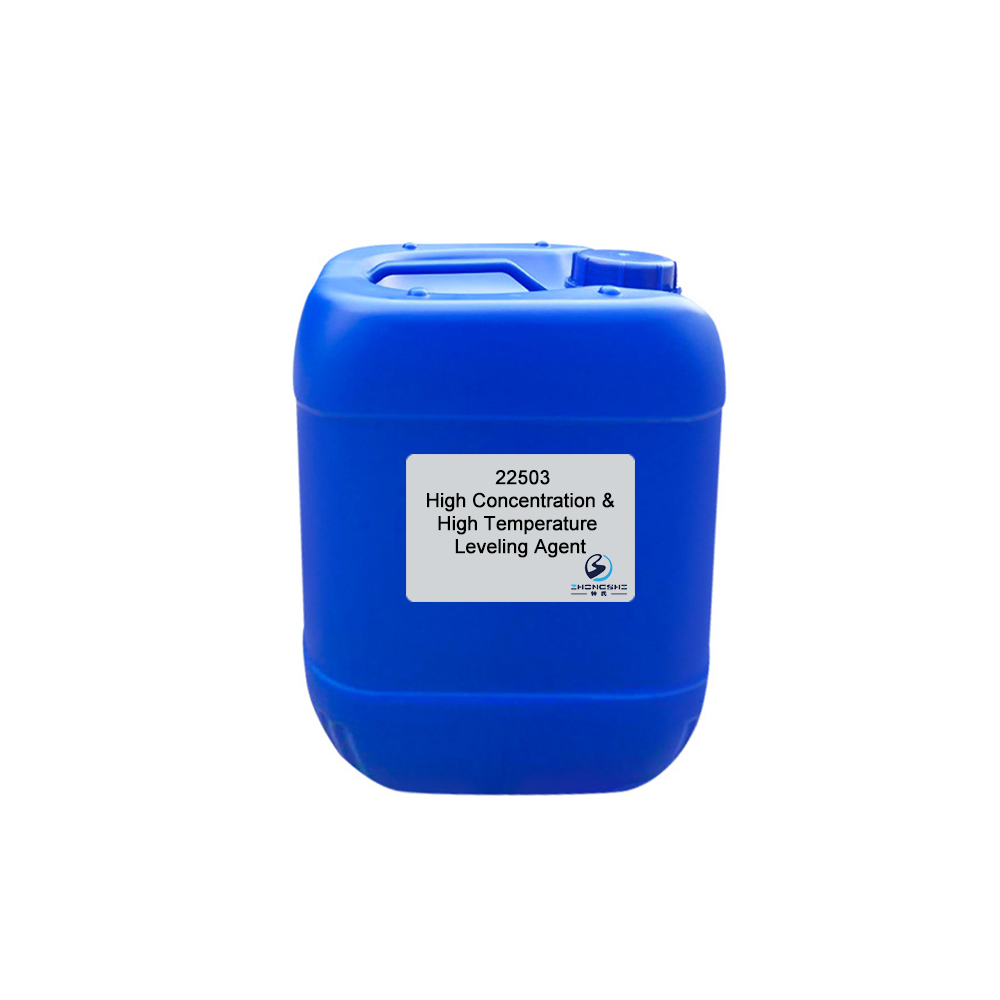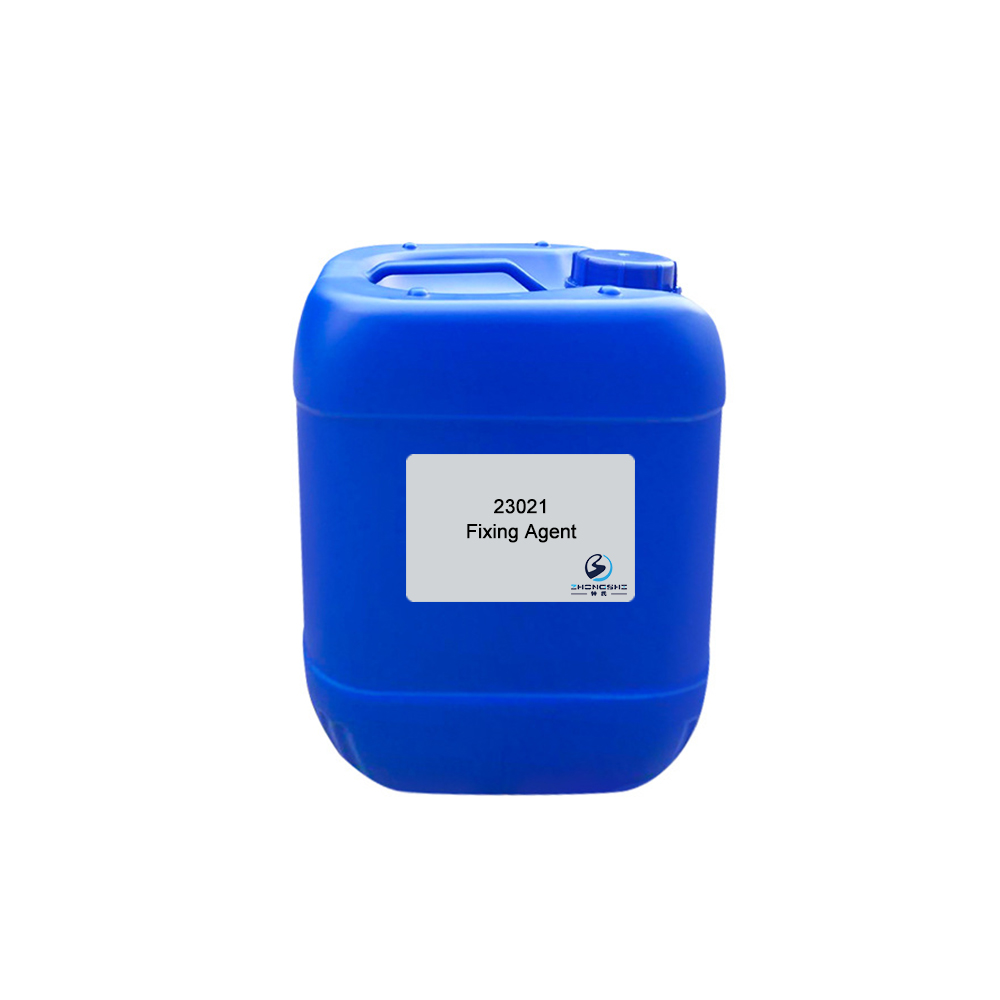22503 High Concentration & High Temperature Leveling Agent
Features & Benefits
- Contains no APEO or PAH, etc. Fits environmental protection requirements.
- Excellent transferring performance. Can shorten the dyeing time, improve production efficiency and save energy.
- Strong ability of retarding. Can effectively decrease the initial dyeing rate and solve dyeing defect problem caused by un-simultaneous dyeing of mixed dyes.
- Extremely low foam. No need to add defoaming agent. Reduces silicone spots on cloth and pollution to equipment.
- Improves dispersity of dispersing dyes. Prevents color spots or color stains.
Typical Properties
| Appearance: | Light yellow transparent liquid |
| Ionicity: | Anionic/ Nonionic |
| pH value: | 6.0±1.0 (1% aqueous solution) |
| Solubility: | Soluble in water |
| Content: | 45% |
| Application: | Polyester fiber and polyester blends, etc. |
Package
120kg plastic barrel, IBC tank & customized package available for selection
TIPS:
Vat dyes
These dyes are essentially water-insoluble and contain at least two carbonyl groups (C=O) that enable the dyes to be converted by means of reduction under alkaline conditions into a corresponding water-soluble ‘leuco compound’. It is in this form that the dye is absorbed by the cellulose; following subsequent oxidation the leuco compound regenerates the parent form, the insoluble vat dye, within the fiber.
The most important natural vat dye is Indigo or Indigotin found as its glucoside, Indican, in various species of the indigo plant indigofera. Vat dyes are used where very high light- and wet-fastness properties are required.
Derivatives of indigo, mostly halogenated (especially bromo substituents) provide other vat dye classes including: indigoid and thioindigoid, anthraquinone (indanthrone, flavanthrone, pyranthone, acylaminoanthraquinone, anthrimide, dibenzathrone and carbazole).









